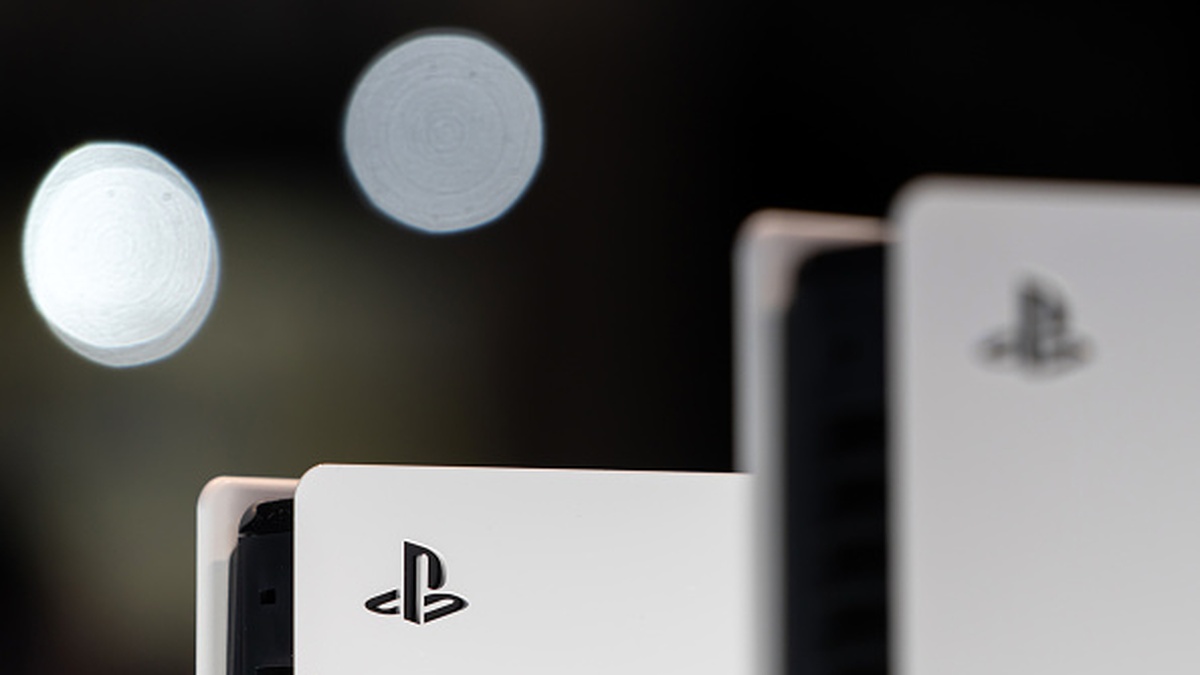Last week, the prominent Japanese gaming publication, Famitsu, conducted a survey of the general response from gamers and developers in regards to the PS Vita. It was clearly evident from the results that people are genuinely excited about Sony’s new handheld and plan on purchasing one when it’s released this holiday season. Here’s what gamers in Japan had to say about the Vita:
– 87% of Japanese gamers have an interest in purchasing a Vita
– 44.8% they intend to buy it on the day of release.
– 54. 9% thought the system was “inexpensive” at its price point of $249 USD for the Wi-Fi model, and 58% said they’d opt for the Wi-Fi version over the 3G one ($299 USD)
If you’re Sony, these numbers are pretty flattering. Famitsu could have easily taken those numbers for what they were and stated simply that the public is anxiously awaiting the Vita. Being the forward-thinking, controversy-stirring (note the sarcasm) journalists they are however, they recently held a similar survey, this time in response to Nintendo’s Wii U. While the response wasn’t terrible, the percentages are, unfortunately for Nintendo, not overwhelmingly positive:
– 38.3% of gamers polled said they had a good impression of the system after it was unveiled at E3, while 33.7% said they did not.
– 28% said they are undecided.
– 22.5% percent said it lacked impact, and many people commented that it seemed like a minor upgrade to the Wii.
Yikes. While this survey isn’t necessarily representative of all Japanese gamers and consumers interested in video games, Famitsu is the most widely read and respected gaming publication in the country. So, let’s consider the idea that these numbers may present an interesting trend. 61.7% of those surveyed stated that they either were not impressed when the Wii U was revealed or are unsure how they feel about it. It’s safe to say that a large portion of those “undecided” voters most likely share that sentiment because they still have no idea what the hell the Wii U is. You can’t blame them either. When the Wii U was officially unveiled at E3 this past June, Nintendo’s press conference left gamers and journalists alike slightly puzzled as to what exactly it was. I was personally tasked with describing the new console for AOTF, and with nothing but the press conference to go off of, I had a heck of a time.
The primary reason for the uncertainty was due in part to the fact that Nintendo placed so much emphasis on the controller and none on the console itself. Of course, you could make the argument that the controller is in fact where emphasis needed to be placed and that Nintendo was right in doing so. After all, the controller, not necessarily the console, is the Wii U’s primary innovation and it is that device that will persuade potential customers. I would agree. However, displaying the console first and laying out its specs, and then following with the revolutionary design and technology of the Wii U controller would have made for a much more effective presentation. Instead, everything we were hearing and watching was relating solely to the controller. In fact, not a single close up of the actual Wii U console was shown on the projector during the unveiling section of the conference. It’s no wonder Nintendo’s stock dropped more than 5% following the reveal. How can you expect people to invest in a product when you’ve only shown them half of it?
Compare the Wii U unveiling to that of the PS Vita. Within the first minute (literally) that it was officially announced, the Vita’s specs were being neatly outlined and I was confident in what was being shown to me. Four concise minutes later, the handheld’s Wi-Fi was detailed, some of its online features were announced and briefly explained, and I was told what I would have to pay in order to get one. It was all clear, coherent, and right to-the-point. The Vita would be the first mobile gaming device to blur the lines between entertainment and social media.
Easy enough.
Regardless of the botched press conference, Nintendo has a possible revolution in the making with the Wii U, so why are people not unbelievably excited for it? It would be a completely different story if it was only the general public who were ignoring the Wii U in favor of the Vita, but even critics seem to be singing the Vita’s praises while taking a more muted, diplomatic approach to Nintendo’s new console. The Game Critics Awards for example, is an annual list of awards voted upon by the industry’s top journalists and publications. Let’s see if you can guess which of the two new systems was given the coveted “Best Hardware” award. Here’s a hint: it wasn’t the Wii U. Both systems are undoubtedly each innovative marvels of technology, but why is it that the only new console in this clash is being overlooked? The imminent release date of the Vita could have a lot to do with it. Yet we’re talking about Nintendo, a company that thrives on ingenuity, who has created the first in a new category of “eighth generation” consoles. What could possibly be the reason for the lopsided numbers displayed in Famitsu’s survey? By stacking the two side by side and comparing some of the more important aspects to a system’s success, we might be able to gain more insight.
Specifications are important, but we’re talking about apples and oranges here. It’s not very feasible to compare the specs of a next-gen console with those of a portable handheld, so take these specs for what they are in relation to what each system was designed to be used for. But before you start feeling sorry for the tiny little Vita, know that it is packing heavy under its hood. First though, let’s take a look at the Wii U’s technical specs.
The console itself will contain an IBM Power Architecture-based, multi-core CPU and a custom designed AMD Radeon HD graphics card. It was announced that the card will support Direct X 10.1, giving the Wii U the strongest graphics potential of any console to date. What’s more is that the Wii U will be the first Nintendo console capable of full 1080p HD and will also support 3D TVs. In terms of storage, the system will support 25 GB optical disks (equivalent of a Blu-Ray disk).
Now, the Wii U’s signature controller will feature a 6.2 inch touchscreen, 2 circle pads and a D-pad, a camera, microphone, speakers, accelerometer, gyroscope, stylus, and 4 shoulder/face buttons. It’ll have the ability to make video calls and share videos from the controller directly to the TV. Yes, this “controller” is unlike anything the industry has ever seen and it is technologically remarkable. However, though it may look like a tablet you’d see in an Apple store, it really is exactly what it’s being marketed as – a controller. It sends and receives information streamed to and from the console which does all the processing and video output, so without the console powered on, the controller is nothing more than those ancient pieces of plastic that Sony and Microsoft have the audacity to call “controllers” and sell alongside PS3s and 360s. It’s also worth noting that the Wii U controller does not support multi-touch technology. Multi-touch is essentially a touch-screen’s ability to register three or more distinct positions. The Wii U controller however, will register just one. The feature definitely would have been nice for say, an RTS game in which you had an overhead view of the landscape and you would be able to “pinch to zoom” in order to get a close-up view of particular units.
The PS Vita on the other hand posts some impressive specs of its own. The handheld will feature dual analog sticks, a standard set of PS face buttons, a front and rear camera, a five-inch OLED touch screen, and front and rear touchpads. Additionally, it’ll include stereo speakers, a microphone, Sixaxis motion system (three-axis gyroscope, three-axis accelerometer), three-axis electronic compass, a built-in GPS (only for the 3G version) as well as Wi-Fi, 3G, and Bluetooth 2.1+EDR connectivity. Oh, and the two cameras feature the abilities of face detection and head tracking. Remember, you can take the Vita wherever you go and don’t worry, those specs won’t diminish as a result. Impressive indeed.
“I have a ton of Wii/PSP games. Can I play them on my newly purchased system?” In the case of the Vita – sort of. Software for the Vita will be distributed on NVG Cards, a new proprietary flash card format, so you won’t simply be able to put a given game from your library of UMD disks into the Vita. These new game cards will be available in 2 GB and 4 GB and the physical size will be similar to SD cards. However, Sony did announce that the Vita will in fact be backwards compatible with the PSP as all PSP games will be made available digitally through the PSN. Although, this doesn’t exactly help the majority of us who didn’t purchase a PSP Go and convert our UMD libraries to a digital format. In other words, if your PSP library isn’t digital, then you’ll probably have to re-buy your favorite PSP games via PSN.
Nintendo fans will be happy to know that the Wii U will be compatible with all Wii games and peripherals, so the multitude of Nunchuks and Wii Remotes of various colors you have lying around, as well as that Balance Board you never use, do not have to be put in the attic just yet. While on the subject of Wii U backwards compatibility, it was announced that the console will not support DVD or Blu-Ray formats. So, while Vita owners (who are like me and foolishly snubbed the thought of buying a PSP Go) are mourning the loss of their UMD collection, Wii U purchasers can similarly weep over the fact that they have to unplug one entertainment device and then plug in another just to watch a burned copy of Finding Nemo. Who would have thought we’d be doing that in 2012?
Online functionality is the single most crucial feature for any given system. This idea is debatable, especially when you consider the success of the Wii which easily had the worst online functionality of the three next-gen consoles. Nintendo has stated that they want the Wii U to appeal to the “hardcore” gamer though, and if they’re serious in that regard, they need an equally serious online platform to compete against the likes of Xbox Live and PSN which both have developed strong and loyal communities. The thought alone of Nintendo finally creating a viable online network is enough to peak the interest of gamers everywhere, but it’s tough to get too excited over it when you have Miyamoto going on record and stating that it is not Nintendo’s goal to have the best online system. Either way, let’s take a look at some of the features that have been announced regarding the Wii U’s online functionality:
1.) The concept of the laborious “friend codes” has been dropped in favor of a more user friendly “account” system presumably similar to gamertags.
2.) The Wii U will be able to track your online process no matter what game you’re playing. It will also track your friends and will compare who’s furtherest in a game, who has the highest score, etc. In game achievements will also be added and they’ll be displayed in each player’s profile. (If this is all sounding familiar, it is. Nintendo is just a tad late to the party.)
3.) Wii U owners will be able to link their accounts to their Club Nintendo accounts, again, in similar fashion to the PSN Store and Xbox Live. With this service, you’ll probably be able to download new content and view the most up-to-date info on your favorite games.
4.) Some games will allow players to schedule online matches with friends using just the controller. So, if you’ve set up a match with a friend and you’re watching TV to pass the time until he/she gets on, when the time comes, a notification will appear on your controller to inform you that the match is about to begin.
The argument over whether or not Nintendo should have added most of these features to the Wii is academic. The fact is that the Wii didn’t have them, so even knowing that Nintendo is making an attempt to at least be on par with their Microsoft and Sony counterparts is promising.
Handhelds may not be generally known for their online functionality, but Sony is looking to change that perception with the Vita. The first of its major features is called Near, which is said to be a “location-based gifting system.” You’ll be able to see where other players are in relation to your location as well as their five most recently played games, and of course it’ll allow you to leave gifts for them. Gifts can be more than simple items however. You’ll also be able to gift challenges, offering possible rewards if completed successfully.
Party is a “platform-wide” grouping system that allows you and three friends to form a party that sticks together regardless of what you do on the Vita. You can chat across games through both text and voice, and cross-game chat is also supported. You’ll also be able to launch Vita games from within Party and your friends can simply press a button and quickly join you. LiveArea is essentially the Vita’s interface and there are three modes: Index, Live and Game. The top area you’ll see is the content information zone, which is the “landing point for when you start any game on PS Vita”. The communication zone is where you “comment on people’s activities within the game as well as publish your messages”. Lastly, Activity is a way for players to discuss game progress. With this system you’ll be able to see your friends’ trophies and ratings, allowing people to leave comments as well.
All of this for a portable handheld. Like I said before, it’s very impressive.
What really matters is the quality of the games selection. Upon launch, the Vita will have a ton of them, and they won’t be just “launch-filler” games either. Uncharted: Golden Abyss, Dust514, LittleBigPlanet, and ModNation Racers are on the list, to name a few, and there are also quite a few big-name franchises that have announced Vita ports. The cross-system support that was demonstrated with Ruin during Sony’s E3 press conference also highlights the interesting concept of the “cloud-based save.” Say you’re playing the game on your PS3 and you’re about to leave for a road trip. This feature will allow you to pick up right where you left off with your Vita, though it remains to be seen how many games will be available both on the PS3 and PS Vita to utilize this idea.
If you happened to be at E3 and wanted to check out some of the Wii U’s upcoming games, the company provided you with a whopping 0 games to view. Everything that was playable or showcased was tech-demos, not actual game prototypes, that were created to display the technology and design of the system. Remember that video that was shown during the unveiling which showcased some prominent third-party games said to be in development for the Wii U? Even that footage was taken from 360 and PS3 rendered gameplay. Then there was this video, showing some of the industry’s biggest developers as they praised the creativity and originality of the Wii U, saying how the system’s revolutionary technology would create some exciting opportunities for them as game developers.
Here’s where it gets intriguing. Ken Levine, illustrious developer and head of Irrational Games can be seen in the video, and just like the other developers he seems enthusiastic and wholeheartedly excited about the possibilities that the Wii U controller will bring. Weeks after the unveiling, Levine was then asked about potential projects that Irrational was developing for the Wii U. He replied, “We have no plans to do any games for that platform.” It’s possible that Levine’s comments in the video were simply disingenuous for the sake of marketing, but this situation if looked at carefully may present a much more ominous state of affairs if you’re Nintendo. A microcosm if you will, that embodies the very essence of why Nintendo should be worried about getting support from third-party developers. The message may be this: though developers, like gamers, might marvel the ground-breaking technology and design of the Wii U, it’s possible that they merely don’t find it practical.
I don’t think Levine was lying when he expressed his excitement for the console. Nevertheless, his first priority as a developer is to create a successful game that is both consistent and comprehensible throughout. With the innovation and ambiguity of the Wii U controller, that may prove to be difficult for many different third-party developers that have the same task before them – to create a cross-platform game in which one of the platforms has one of, if not the single most inventive control scheme ever created. The daunting challenges this will pose to developers has created a sense of “wait-and-see” instead of “let’s make this happen.” Devs are not necessarily scared to develop for the Wii U, they’re simply hesitant, but this approach is just as terminal for Nintendo. It’s this reasoning that may explain why Levine and Irrational are currently developing an untitled BioShock game for the Vita, but not the Wii U – the technology behind the Vita is familiar and is essentially, a safe bet.
Ubisoft appears to be one of the few third-party developers taking the more active, ambitious approach to Wii U game development, and even though the footage shown in the Wii U unveiling trailer wasn’t actual Wii U footage, the titles that were displayed are ones that gamers have a right to be excited about. Nintendo now has to make sure that critical third-party support is still there in the coming years, and that may depend on how developers utilize (or fail to utilize) the technology of the Wii U controller.
Perhaps the most interesting feature is the controller’s ability to get new views and perspectives while playing games. For example, the Wii U trailer shows a golf demo in which the player puts the Wii U controller on the ground. The golf ball appears on the controller surrounded by sand. The player then uses the Wii Remote to tee off and the ball travels virtually from the controller to the TV screen where you will see the ball fly and then land. The technology behind it is incredible. The question is, will it prove to be viable to the typical consumer household? This question brings us to the last comparable aspect.
What is the practicality of each of these systems? The Vita’s practicality is pretty straightforward. It is simply put, the next innovation in portable gaming. The technology alone is enough to make for easily the most powerful handheld device the gaming world has ever seen. Add all of its online features together with the slew of quality titles and cross-support with the PS3 and you have a remarkable portable gaming system that is an absolute steal at its $249 price point.
But what about the Wii U’s practicality? The very selling point of the system is that it can be played on the controller, independently of the TV. However, this exact feature that may very well revolutionize the way we play games is mired by the Wii U’s fatal flaw – only one controller can be used per system. Now, I can’t speak for the majority of families across the globe that play video games in the same room together as a designated activity. Yet, I can attest to the fact that for me personally, if I were to sit down with my family to play a Wii U game, the gaming session itself would ultimately become secondary to the resulting fist fight that would break out over who got to use the one Wii U controller.
Scarcity creates conflict. It has since the beginning of Man on this Earth. The fact that the Wii U supports just one controller will inevitably cause exasperating and incessant arguments for some households. Though the Wii U will have multiple different controller situations in which players can pick and choose the specific way they want to play, the following seems to be the most popular, especially throughout Wii U marketing:
One player has a Wii U controller while the other uses standard Wii controls, whether it’s with the Nunchuk/Wii Remote combo or the Classic Controller. Though the two players have different control schemes, they both achieve a sort of uniformity as they are playing the same game on the same console. It’s the technology however, that will put the non-Wii U controller player at a disadvantage and limit his/her experience. That player will be forced to look at the TV alone, while the person with the Wii U controller has options. They could choose to look at the TV solely, or perhaps at the screen in their hands which might display a different view than the TV, or any combination of the two. This scenario also applies if there are more than just two players. In that situation, it looks as if the players using the traditional Wii controls will have to team up to chase and/or catch the player with the Wii U controller.
It sounds reasonable enough, but ultimately, here is the bottom line – when I want to play with my family/friends, no one is going to want to use the traditional Wii controls, but someone is going to have to settle for them. I have already played the Wii and waved my arms using the magic of the Nunchuks and Wii Remote innumerable times. But that’s just the point. We’ve all had that experience. The Wii U is a new console that is supposed to endow us with a brand new experience, one that I haven’t been through already. This isn’t to say that I won’t experience something new if I’m to use the standard Wii controls with the Wii U, it’s just that the experience will be limited and it certainly will not be as unique as that of the player with the Wii U controller. It’s safe to assume that forcing certain family members or friends to have an inadequate experience while you hog the one Wii U controller may not go over very well. Sure, everyone could take turns. But in reality, who would willingly pass up the chance to use the inventiveness of the Wii U’s controller? Chances are there will be those who will be willing to argue about it for hours on end, and we all know that is one experience which is not enjoyable.
So, what do Famitsu’s statistics tell us, if anything? The poll numbers may be as inconsequential as a hangover from the Wii U’s confusing unveiling at E3. After all, it hasn’t even been two months since we first laid eyes on its astounding controller. Yet when you look closely and comparatively at both the Wii U and Vita, a different trend seems to arise. Considering that it’s a portable handheld, the Vita’s technology might be considered just as significant as the originality of the Wii U. It has the backwards compatibility that the Wii U will feature, albeit only some of us will be able to utilize it. The Wii U’s online functionality is still heavily shrouded while the Vita’s will support features unlike those of any portable system before it, and it goes without saying that currently, the Vita has the edge in the game selection department. You can see where I’m going. The Vita stacks up to the Wii U in nearly every aspect in which you can fairly compare the two.
Nintendo will have this going for them though: people purchase systems accustomed to their own personal lifestyles and preferences. They purchase given systems because one simply suits them better than the next. When looking at it this way, everything stated above is trivial to the Wii U’s success. Even if the two systems were launching at the same time, which they’re not, it wouldn’t be likely that someone would choose to replace their home gaming console with a Vita rather than a Wii U. Likewise, a business executive who is constantly on the road probably wouldn’t shell out for a Wii U when he/she could have the most powerful mobile gaming device available to take with them on those long and boring flights.
Then again, the poll statistics could indicate a very basic concept – innovation can create a tentative and often cautious reaction. People know what they’re getting with the Vita. It will be a potable gaming system that will combine social media and entertainment like never before. The Wii U on the other hand, is not as practical. But since when has Nintendo ever been practical? When has the company ever grown or become more successful as a result of following the herd? The Wii for instance, was not practical. In 2006, a controller that serves as a pointing device and detects movement in three dimensions was clearly not the first thought that came to one’s mind if they had to define gaming. There were of course those who claimed the Wii would be nothing more than a short-lived gimmick.
What a gimmick it was. It has since sold more than 87.5 million units worldwide. Five years later, it’s likely that motion controls still are not thought of as the ultimate gaming experience, but look how far they’ve come. Both the Kinect and PS Move have taken that original initiative first created by Nintendo, integrated it into their own systems and built upon it. Nintendo has similarly reiterated that inventiveness yet again with the 3DS. Nintendo’s new portable system is far from perfect, and it’s debatable whether or not the concept works at all. Nevertheless, Nintendo is the first to attempt it. Not even the mighty Vita, which is sure to take portable gaming’s top selling spot, is able to undertake such a bold project as to make you see 3D images on a portable handheld screen.
It very well may be that the technology and design of the Wii U is currently over our heads. We might not appreciate, or even comprehend, the advancement that the Wii U will supply when it’s released next year. But years from now, even if there are more PS Vitas per household than Wii Us, chances are we’ll come to recognize Nintendo’s newest console as a device that defined a generation. A generation that truly lives alongside the concept of instant gratification, who can’t function without entertainment or some form of social media at their fingertips during every waking moment. If we’re listening to a song and are late for class, we leave the house with the song on our iPods. If we’re reading an article but have to go to work, we read it on the bus with our smartphones or tablets. Technology has provided us with these wonders, and console gaming stands as one of the very few forms of entertainment that you can’t use independently of a larger screen. That was of course, before the Wii U – a device that now allows for continuous gaming regardless of what is happening around you.
So what if you’re in the middle of an epic boss battle and your mom is insisting that she catch the latest episode of The Real Housewives of New York City? That nagging, unremitting problem is no more as you can now continue your virtual journey on the screen of your controller with the flip of a switch. That my friends, is the very essence of innovation and modernization. In short, that is Nintendo. The company that thrives on originality has unquestionably redefined ingenuity in the gaming industry once again. If we don’t recognize this entertainment marvel that has been laid out in front of us, we could miss the opportunity to appreciate what is undoubtedly the next step in a gaming revolution that will be picked up and built upon by others in the industry throughout the years to come.











Published: Jul 29, 2011 02:09 pm